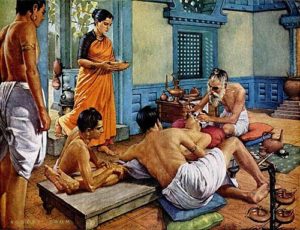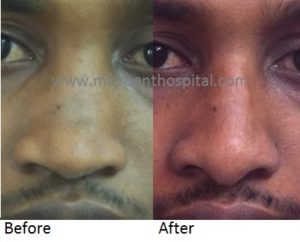History of the Augmentation Rhinoplasty Surgery:

Sushruta, India in approximately 800 BC described a nasal reconstruction approach based on the transfer of a pedicle forehead skin flap.
The treatment of saddle-nose deformities has been changed from the contributions of countless pioneers of rhinoplasty in the 19th century and in the 20th century.
Depressed Nose or Saddle Nose Deformity:

Findings typical saddle nose deformity includes nasal dorsal concavity; shortened vertical nasal length and loss of nasal tip support and projection often affect both the aesthetic and functional qualities of the nose. This deformity has also been described as a pug nose or boxer’s nose as the prevalence is higher in population groups prone to facial trauma (i.e., boxers, criminals, athletes), in persons with a history of intranasal cocaine use, and in individuals with a history of nasal surgery (e.g., radical sub mucous septal resection, reductive rhinoplasty).
Dorsum Augmentation Rhinoplasty done at MicroCare ENT Hospital and Research institute is for augmentation of bridge of nose, needed in congenital depressed nose or post traumatic depression saddle noses or to match with elevated tip of nose.
Contact Microcare Rhinoplasty Centre for Depressed Nose Augmentation in Hyderabad.
 Welcome to MicroCare Rhinoplasty Centre in Hyderabad Crafting Beautiful Profiles, One Nose at a Time
Welcome to MicroCare Rhinoplasty Centre in Hyderabad Crafting Beautiful Profiles, One Nose at a Time
